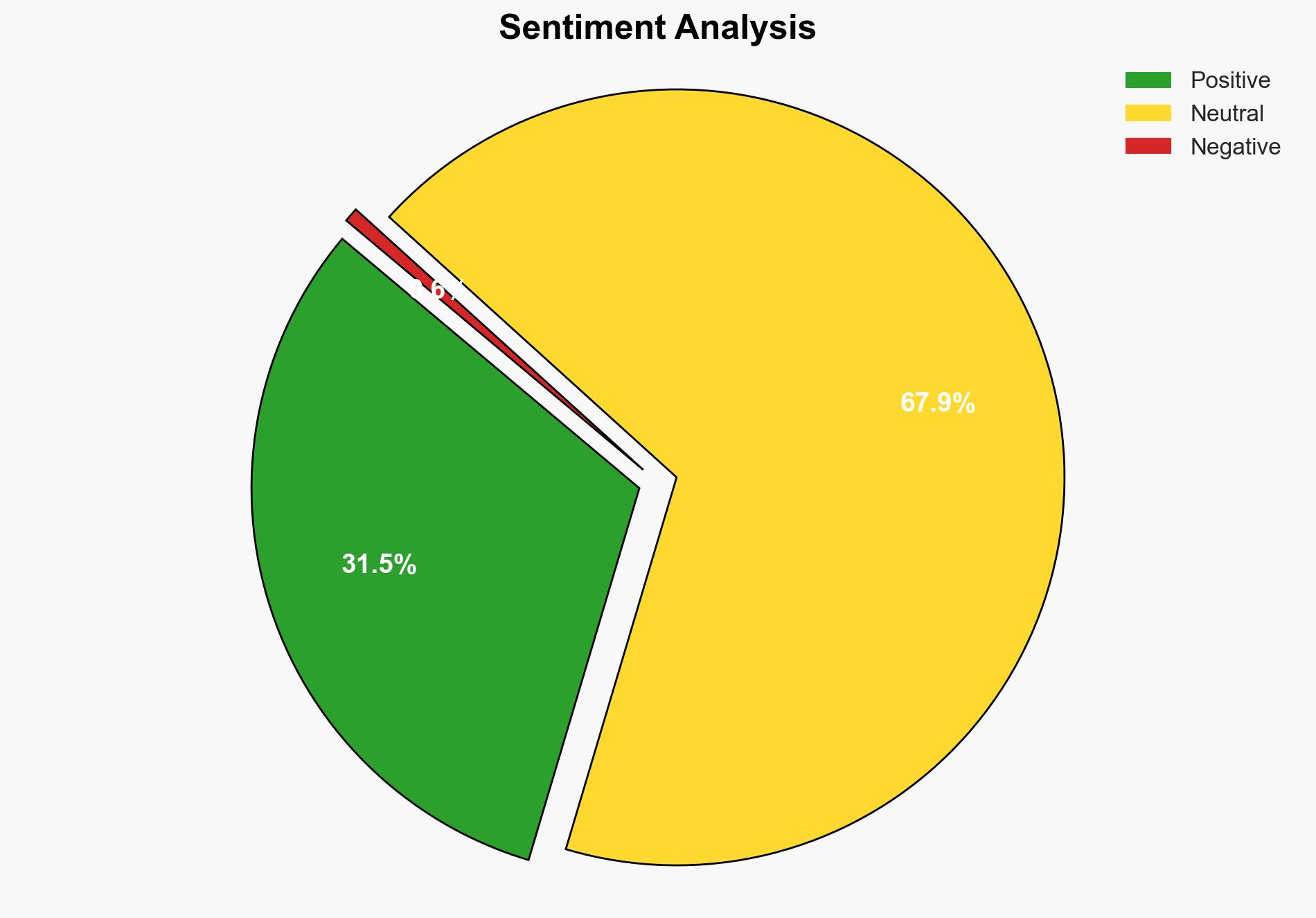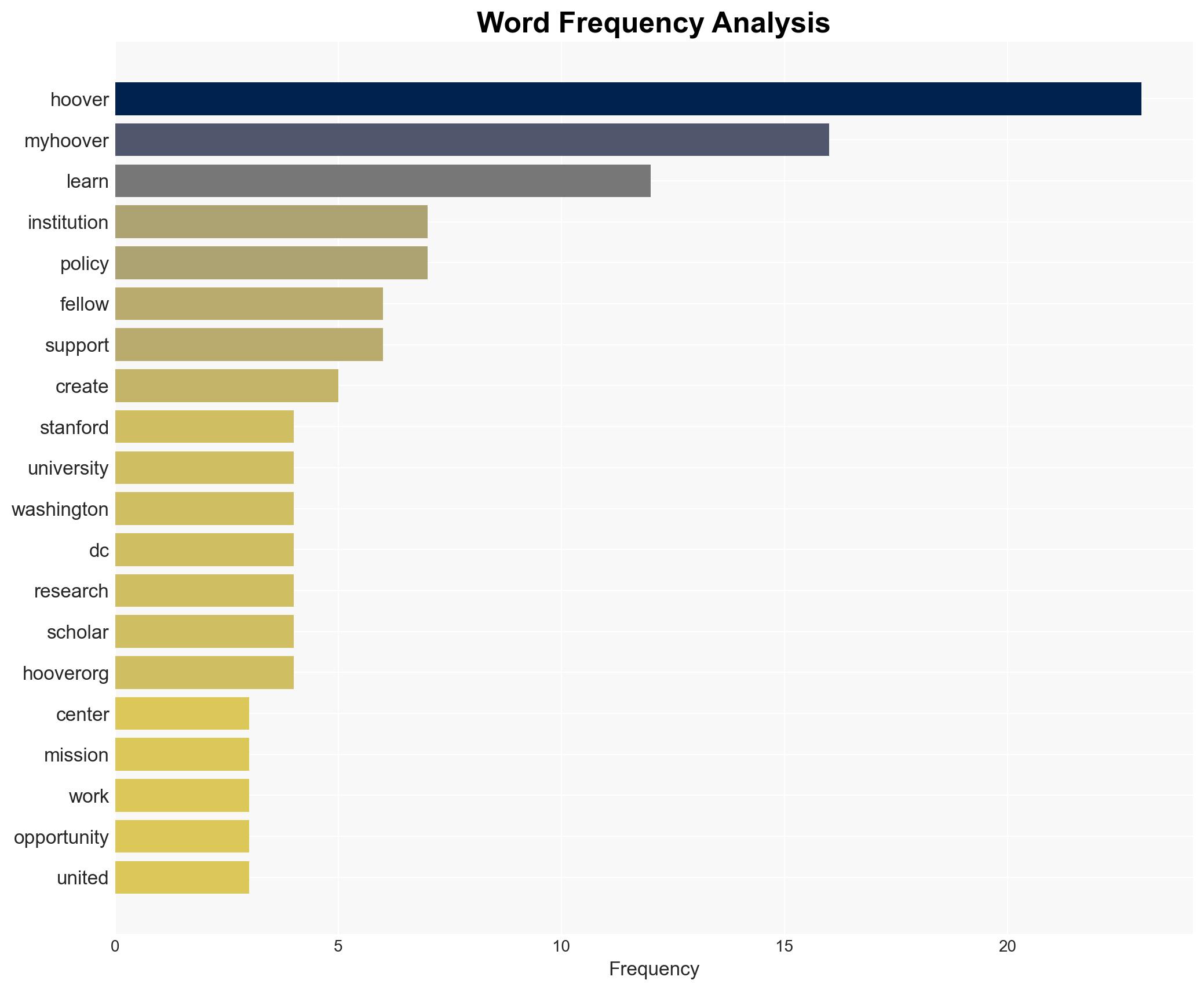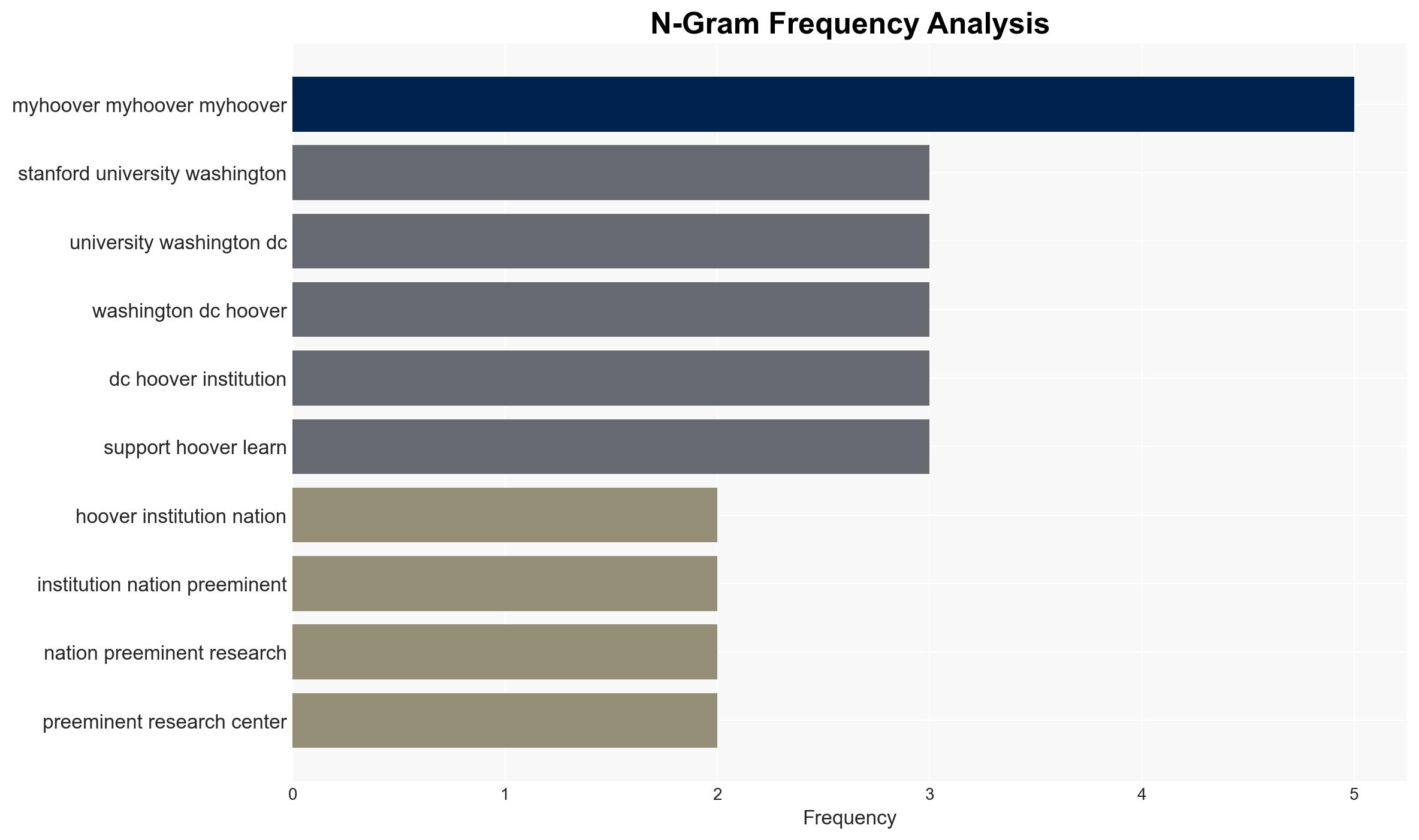Americas Chip Restrictions Are Biting in China – Hoover.org
Published on: 2025-11-16
AI-powered OSINT brief from verified open sources. Automated NLP signal extraction with human verification. See our Methodology and Why WorldWideWatchers.
Intelligence Report:
1. BLUF (Bottom Line Up Front)
The U.S. chip restrictions are significantly impacting China’s technological advancement and economic strategy. With a moderate confidence level, the most supported hypothesis is that these restrictions will lead to increased Chinese investment in domestic semiconductor capabilities, potentially escalating technological competition. Recommended actions include monitoring China’s technological developments and preparing for potential retaliatory measures.
2. Competing Hypotheses
Hypothesis 1: The U.S. chip restrictions will significantly hinder China’s technological progress, leading to a slowdown in its economic and military advancements.
Hypothesis 2: The restrictions will incentivize China to accelerate its domestic semiconductor development, potentially leading to a more self-sufficient and competitive technological sector.
Hypothesis 2 is more likely given China’s historical resilience and strategic focus on technological independence, as well as its substantial investment capabilities.
3. Key Assumptions and Red Flags
Assumptions: The analysis assumes that China has the capability and resources to develop its semiconductor industry rapidly. It also assumes that the U.S. will maintain its current level of restrictions without significant policy shifts.
Red Flags: Potential underestimation of China’s current technological capabilities and over-reliance on U.S. intelligence assessments. Deception indicators include potential misinformation from Chinese state media regarding technological progress.
4. Implications and Strategic Risks
The primary risk is an escalation in technological competition, potentially leading to a tech arms race. Economically, this could disrupt global supply chains and increase costs for tech companies reliant on Chinese manufacturing. Politically, it may strain U.S.-China relations further, impacting diplomatic negotiations on other critical issues.
5. Recommendations and Outlook
- Monitor China’s semiconductor industry developments closely, focusing on government investments and partnerships.
- Engage with allies to ensure a coordinated approach to technology restrictions and share intelligence on China’s progress.
- Best-case scenario: China fails to develop competitive semiconductor capabilities, maintaining U.S. technological superiority.
- Worst-case scenario: China achieves rapid technological advancement, challenging U.S. dominance in key tech sectors.
- Most-likely scenario: China makes incremental progress, leading to a prolonged period of technological competition.
6. Key Individuals and Entities
No specific individuals are named in the source text. Key entities include the U.S. government, Chinese government, and major semiconductor companies in both countries.
7. Thematic Tags
National Security Threats, Technological Competition, Economic Strategy, U.S.-China Relations
Structured Analytic Techniques Applied
- Cognitive Bias Stress Test: Expose and correct potential biases in assessments through red-teaming and structured challenge.
- Bayesian Scenario Modeling: Use probabilistic forecasting for conflict trajectories or escalation likelihood.
- Network Influence Mapping: Map relationships between state and non-state actors for impact estimation.
Explore more:
National Security Threats Briefs ·
Daily Summary ·
Support us
·





